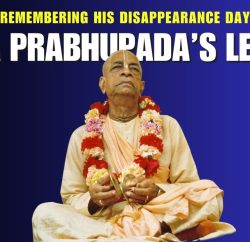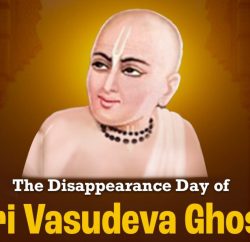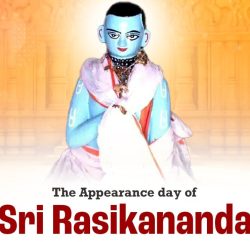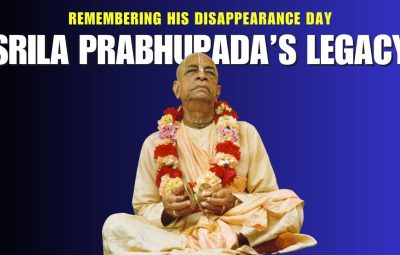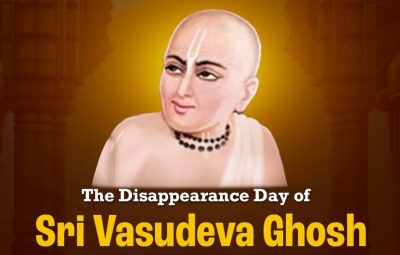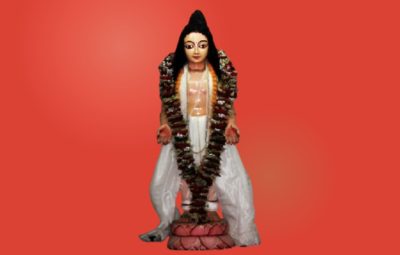Sri Gadadhara Dasa was the 23rd branch of Si Chaitanya Mahaprabhu’s tree of devotional service. Vishwa Guru Srila Prabhupada explains about Sri Gadadhara Dasa in Sri Chaitanya Charitamrita as follows:
“About eight or ten miles from Calcutta, on the banks of the Ganges, is a village known as Endiyadaha-grama. Srila Gadadhara Dasa was known as an inhabitant of this village (eṅḍiyādaha-vāsī Gadadhara dāsa). The Bhakti-ratnakara (Seventh Wave), informs us that after the disappearance of Lord Chaitanya Mahaprabhu, Gadadhara Dasa went from Navadvipa to Katwa. Thereafter, he came to Endiyadaha-grama and resided there. He is stated to be the luster of the body of Srimati Radharani, just as Srila Gadadhara Pandita Goswami an incarnation of Srimati Radharani Herself. Chaitanya Mahaprabhu is sometimes explained to be rādhā-bhāva-dyuti-suvalita, or characterized by the emotions and bodily luster of Srimati Radharani. Gadadhara Dasa is this dyuti, or luster.
In the Gaura-gaṇoddeśa-dīpikā (154), he is described to be an expansion of the potency of Srimati Radharani. He counts among the associates of both Srila Gaurahari and Nityananda Prabhu; as a devotee of Sri Chaitanya Mahaprabhu, he was one of the associates of Lord Krishna in conjugal love, and as a devotee of Lord Nityananda, he is considered to have been one of the friends of Krishna in pure devotional service. Even though he was an associate of Lord Nityananda Prabhu, he was not among the cowherd boys but was situated in the transcendental mellow of conjugal love. He established a temple of Sri Gaurasundara in Katwa.
In 1434 Sakabda (A.D. 1512), when Lord Nityananda Prabhu was empowered by Lord Chaitanya to preach the sankirtana movement in Bengal, Sri Gadadhara Dasa was one of Lord Nityananda’s chief assistants. He preached the sankirtana movement by requesting everyone to chant the Hare Krishna maha-mantra. This simple preaching method of Srila Gadadhara Dasa can be followed by anyone and everyone in any position of society. One must simply be a sincere and serious servant of Nityananda Prabhu and preach this cult door to door.
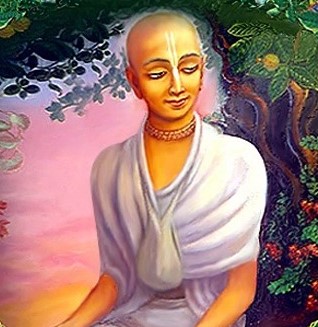
When Srila Gadadhara Dasa was preaching the cult of hari-kirtana, there was a magistrate who was very much against his sankirtana movement. Following in the footsteps of Lord Chaitanya Mahaprabhu, Srila Gadadhara Dasa one night went to the house of the Kazi and requested him to chant the Hare Krishna mahā-mantra. Kazi replied, “All right, I shall chant Hare Krishna tomorrow.” On hearing this, Srila Gadadhara Dasa began to dance, and he said, “Why tomorrow? You have already chanted the Hare Krishna mantra, so simply continue.”
In the Gaura-gaṇoddeśa-dīpikā (verses 154–55) it is said:
rādhā-vibhūti-rūpā yā candrakāntiḥ purā vraje
sa śrī-gaurāṅga-nikaṭe Dasa-vaṁśyo gadādharaḥ
pūrṇānandā vraje yāsīd baladeva-priyāgraṇī
sāpi kārya-vaśād eva prāviśat taṁ gadādharam
Srila Gadadhara Dasa is considered to be a united form of Candrakanti, who is the effulgence of Srimati Radharani, and Purnananda, who is the foremost of Lord Balarama’s very dear girlfriends. Thus, Srila Gadadhara Prabhu was one of the associates of both Chaitanya Mahaprabhu and Nityananda Prabhu.
Once Srila Gadadhara Dasa was returning to Bengal from Jagannatha Puri with Nityananda Prabhu, he forgot himself and began talking very loudly as if he were a girl of Vrajabhumi selling yoghurt, and Srila Nityananda Prabhu noted this. Another time, while absorbed in the ecstasy of the gopis, he carried a jug filled with Ganges water on his head as if he were selling milk. When Lord Chaitanya Mahaprabhu appeared in the house of Raghava Pandita while going to Vrindavana, Gadadhara Dasa went to see Him, and Sri Chaitanya Mahaprabhu was so glad that He put His foot on his head. When Gadadhara Dasa was present in Endiyadaha, he established a Bala Gopala murti for worship there. Sri Madhava Ghosha performed a drama known as Dana-khanda with the help of Sri Nityananda Prabhu and Sri Gadadhara Dasa. This is explained in the Chaitanya-bhagavata (Antya 5.318–94).
The tomb of Gadadhara Dasa Prabhu, which is in the village of Endiyadaha, was under the control of the Samyogi Vaishnavas and later under the direction of Siddha Bhagavan Dasa Babaji of Kalna. By his order, Sri Madhusudana Mullik, one of the members of the aristocratic Mullik family of the Narikela-danga in Calcutta, established a patavati (monastery) there in the Bengali year 1256 (A.D. 1849). He also arranged for the worship of a Deity named Sri Radhakanta. His son Balaicanda Mullik established Gaura-Nitai Deities there in the Bengali year 1312 (A.D. 1905). Thus, on the throne of the temple are both Gaura-Nityananda Deities and Radha-Krishna Deities. Below the throne is a tablet with an inscription written in Sanskrit. In that temple, there is also a small Deity of Lord Shiva as Gopeshvara. This is all described on a stone by the side of the entrance door.


